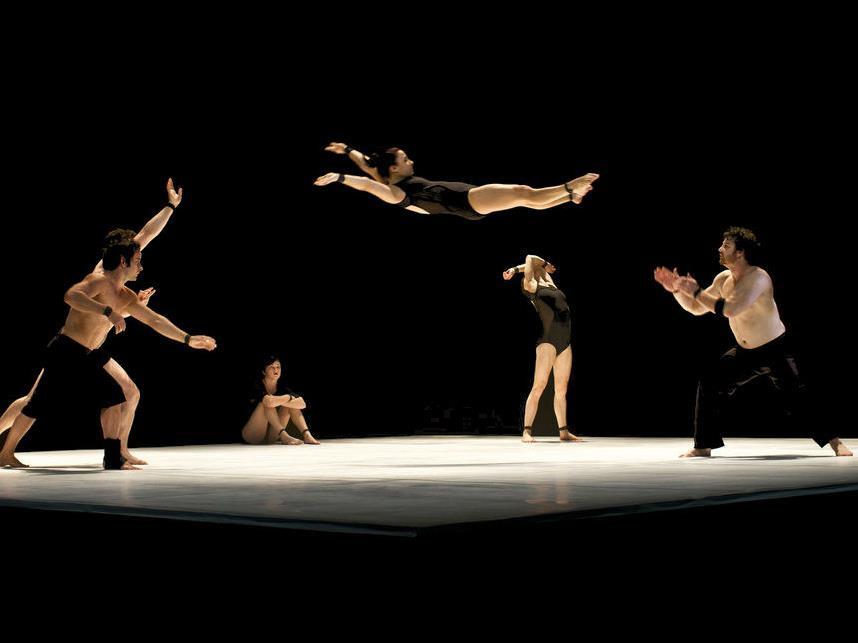The small arts sector is more efficient in reaching audiences and supporting the arts. Image credit: Performance by Circa captured by Darcy Grant Photography
Sometimes it takes an extraordinary decision to draw attention to the ordinary ones around us all the time. As anyone with a passing interest in the arts now knows, Senator Brandis, the Federal Arts Minister has recently stripped more than a hundred million dollars from the Australia Council to fund a National Programme for Excellence in the Arts (NPEA) to be administered directly by his department.
Agreements that ensure Australia’s Major Performing Arts’ (AMPAG) companies allocations are fixed mean it is a massive cut to small to medium arts companies and projects. It is part of a long term trend that has seen more and more money taken from small companies and artists and pooled in the “major” “mainstream” companies.
The gap between the AMPAG companies and everyone else in the arts in Australia has long been an issue best not mentioned in polite company. But the numbers are staggering. When I last ran the numbers on the Australia Council’s budget in 2010, Opera Australia alone received more funding than all 781 separate projects, organisations and individuals that had been competitively funded across the entire programs of the Australia Council’s literature, music, theatre, dance, visual arts, and inter-arts boards.
Given that the NPEA will be open to if not outright tilted towards the AMPAG companies, this can only serve to make that disparity worse. Opera Australia’s CEO Craig Hassell’s official position on these cuts is that they don’t care. He told Fairfax, ‘I don’t really have a view on where the money comes from, as long as the government is spending money on the arts… The funding is ultimately for audiences. Wherever the funding goes, audiences should benefit. If audiences benefit then I’m happy.’
But therein lies the problem. I could talk about fairness, justice, diversity and equity but for now let’s just look at the measures a nominally rational government and Craig Hassell both claim to care about: efficiency and audiences.
Based on the most recent fact sheet on the AMPAG site the major companies received $165 million of government grant funds to put on performance, activities and workshops for just over 4 million people. That equals an average subsidy per attendee of just over $40 — given a lot of the AMPAG audience are subscribers the average subsidy per person is considerably higher.
The various fact sheets on AMPAG site contains a lot of spin about ‘The Arts’. How 9 in 10 Australians participate in the arts (they do!), how more than a quarter of Australians actually participate in making art (we do!) and how nearly 18 million Australians paid to attend a ‘live performance industry’ show the year before. It’s all true. We do, as a nation, love to attend the arts, make art and see live shows. More than half of Australians see a live show each year. It’s just that our art lovers, according to the same data, aren’t going to the same places the money is.
So, how do you account for the difference? Some of it is purely commercial. But a lot of it is that the small arts sector is just spectacularly more efficient. They reach more people with less money and directly support the arts, culture and creativity that millions of us attend, participate in and love. They stimulate business, economic growth and tourism. This ultimately is the strange reality of today’s arts funding environment.
The major companies are a mixed bag. Some are ‘excellent’, some are efficient, some are innovative but many are average or worse compared to their similarly-resourced international peers. In funding terms it is the ‘fringe’ that is where the audiences are. A rich mix of thousands of organisations, projects, festivals, infrastructure and individuals that ‘normal’ people like, use and interact with all the time. They do a hell of a lot with a little and we take it for granted.
I was recently chatting with someone who claimed he couldn’t think of anything publicly funded ‘that I could give a rat’s arse about.’ I clicked at his Facebook profile to see what he ‘Likes’ and quickly counted at least eight publicly supported small to medium arts projects, publications, festivals and funded artists. Not a major company in sight. Art is subjective. Australians may not all like the same things but we all like something whether it’s contemporary music, musical theatre, dance, poetry, folk art, photography, craft, digital media or whatever. Funding needs to respect the diversity of that.
There will be many submissions to the Senate Inquiry into this decision. Many will come from artists, small companies and audiences. You can even make your own. If you’re involved in a small arts project it might be useful to calculate how efficient you are at finding your audience using the AMPAG numbers as a benchmark. How much would your attendees and participants cost to reach at $40 a head? Perhaps you could tweet or share on Facebook how much your audience would cost if it was #fundedlikeamajor?
That whole diverse ecology of creativity and participation is incredibly heavily subsidised. Not by the government. They support it barely enough to leverage the massive resources the rest of the community puts in. It is mostly subsidised by the passion, the sweat, the volunteers, the discount labour, the effort and the imagination of artists, participants, arts workers and the communities that love their work and support them.
In other words: by the overwhelming majority of Australians.





